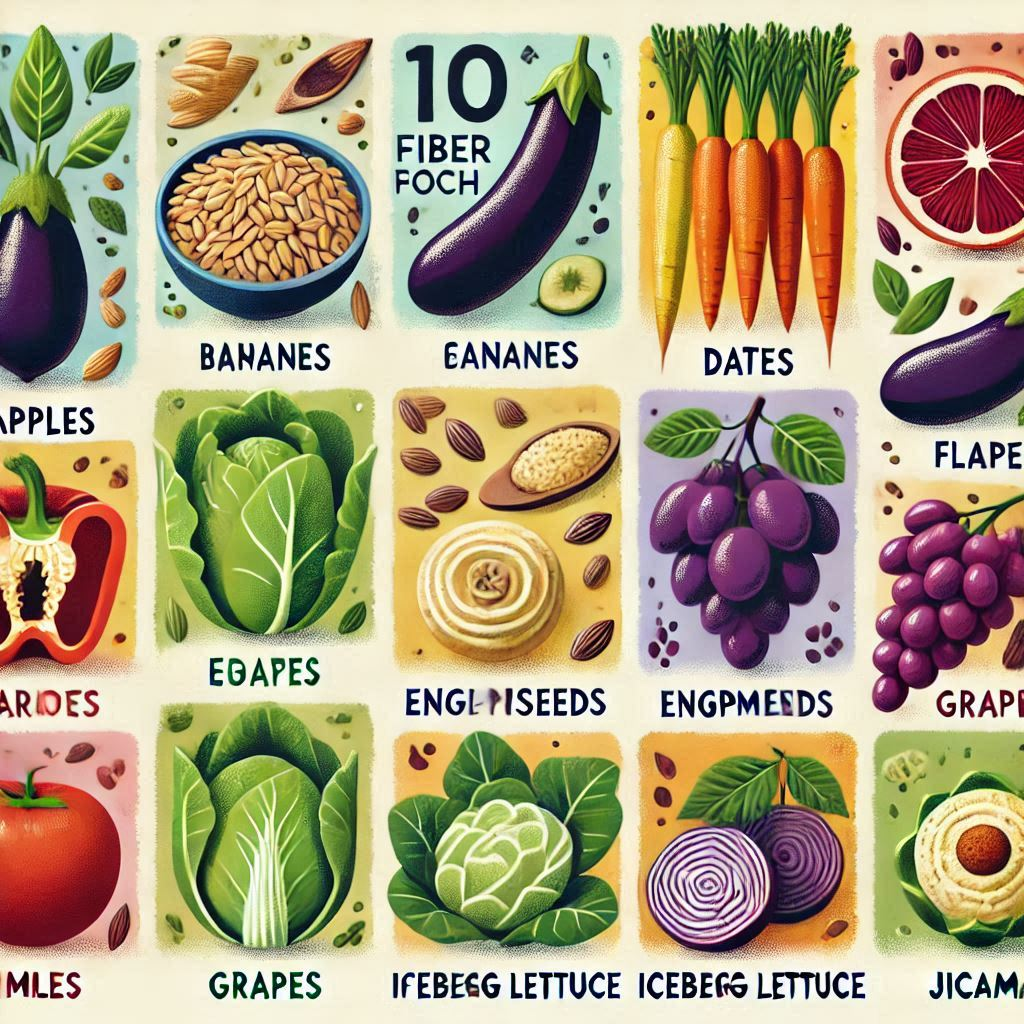
Benefits of Green Tea from 6 Around the World
Benefits of Green Tea from 6 Around the World
Discover the benefits of green tea from six different regions around the world. Learn how this powerful beverage can enhance your health and well-being.

Introduction
Brief Overview of Green Tea and Its Global Popularity
Green tea, a beloved beverage with a rich history, has been cherished for centuries across various cultures. Originating in China, it has spread its roots globally, becoming a staple in many countries. Its delicate flavor, combined with numerous health benefits, has made it a popular choice for tea enthusiasts worldwide. From traditional tea ceremonies in Japan to the refreshing mint tea in Morocco, green tea’s versatility and appeal are undeniable.
Explanation of the Health Benefits Associated with Green Tea
Green tea is renowned for its numerous health benefits, which are primarily attributed to its high content of antioxidants, particularly catechins. These antioxidants help combat oxidative stress and reduce inflammation, promoting overall health. Regular consumption of green tea has been linked to improved heart health, enhanced brain function, weight loss, and a reduced risk of certain cancers. Additionally, green tea can aid in digestion, boost the immune system, and improve skin health.
Read also: Ache Relief: 7 Effective Tips for Fast Recovery
Overview of the Six Regions and Their Unique Green Tea Varieties
This guide explores the unique green tea varieties from six different regions around the world, highlighting their distinct characteristics and health benefits:
- Japan: Known for its vibrant green teas like Matcha, Sencha, Gyokuro, and Hojicha.
- China: Home to famous teas such as Longjing (Dragon Well), Biluochun, Huangshan Maofeng, and Gunpowder.
- India: Offers unique varieties like Assam Green Tea, Darjeeling Green Tea, and Nilgiri Green Tea.
- Korea: Features teas like Nokcha, Jakseol, and Jungjak, known for their detoxifying properties.
- Taiwan: Renowned for Pouchong, Dong Ding, and High Mountain Green Tea, which are celebrated for their flavor and health benefits.
- Morocco: Famous for Moroccan Mint Tea (Maghrebi Mint Tea), a refreshing blend of green tea and fresh mint.
This exploration will delve into the specific benefits and cultural significance of each region’s green tea, providing a comprehensive understanding of this globally cherished beverage.

Section 1: Japanese Green Tea
Types: Matcha, Sencha, Gyokuro, Hojicha
Japanese green tea is renowned for its variety and quality. The most popular types include:
- Matcha: A finely ground powder made from specially grown and processed green tea leaves. It is known for its vibrant green color and is traditionally used in Japanese tea ceremonies.
- Sencha: The most common type of green tea in Japan, made from steamed and rolled tea leaves. It has a fresh, grassy flavor.
- Gyokuro: A premium green tea that is shaded for several weeks before harvest, resulting in a rich, sweet flavor and a higher concentration of nutrients.
- Hojicha: A roasted green tea with a toasty, caramel-like flavor. It is lower in caffeine and has a unique, comforting taste.
Benefits: Rich in Antioxidants, Boosts Metabolism, Enhances Mental Clarity
Japanese green teas are celebrated for their numerous health benefits:
- Rich in Antioxidants: These teas are packed with catechins, particularly epigallocatechin gallate (EGCG), which help combat oxidative stress and reduce inflammation.
- Boosts Metabolism: The combination of caffeine and catechins in green tea can enhance metabolic rate and increase fat oxidation, aiding in weight management.
- Enhances Mental Clarity: The amino acid L-theanine, found in high concentrations in matcha and gyokuro, promotes relaxation and improves focus and cognitive function.
Cultural Significance: Traditional Tea Ceremonies, Daily Consumption
Green tea holds a special place in Japanese culture.
- Traditional Tea Ceremonies: Matcha is the centerpiece of the Japanese tea ceremony, a ritualistic practice that emphasizes mindfulness, respect, and tranquility.
- Daily Consumption: Green tea is a staple in Japanese households, enjoyed daily for its refreshing taste and health benefits. It is often served with meals and offered to guests as a sign of hospitality.
Preparation Methods: Traditional Whisking for Matcha, Steeping Techniques for Other Types
The preparation of Japanese green tea varies by type.
- Matcha: Prepared by whisking the powdered tea with hot water using a bamboo whisk (chasen) until it becomes frothy.
- Sencha, Gyokuro, Hojicha: These teas are typically steeped in hot water. The water temperature and steeping time vary; for example, gyokuro is steeped at a lower temperature (around 50-60°C) to preserve its delicate flavors, while hojicha is steeped at a higher temperature (around 90°C) to bring out its roasted notes.

Section 2: Chinese Green Tea
Types: Longjing (Dragon Well), Biluochun, Huangshan Maofeng, Gunpowder
China is the birthplace of green tea, and it boasts a wide array of famous varieties:
- Longjing (Dragon Well): Known for its flat, sword-shaped leaves and sweet, nutty flavor. It is one of the most famous Chinese green teas.
- Biluochun: characterized by its tightly rolled leaves and floral aroma. It has a delicate, fruity taste.
- Huangshan Maofeng: Grown in the Huangshan (Yellow Mountain) region, this tea has a fresh, slightly sweet flavor and a distinctive appearance with white tips.
- Gunpowder: Named for its pellet-like appearance, this tea has a bold, slightly smoky flavor and is often used in Moroccan mint tea.
Benefits: Improves Heart Health, Aids Digestion, and Weight Loss
Chinese green teas offer a range of health benefits:
- Improves Heart Health: Regular consumption of green tea can help lower cholesterol levels and reduce the risk of heart disease.
- Aids Digestion: The polyphenols in green tea can improve digestion and reduce gastrointestinal discomfort.
- Supports Weight Loss: The catechins and caffeine in green tea can boost metabolism and promote fat burning, aiding in weight management.
Cultural Significance: Historical Roots, Medicinal Uses
Green tea has deep historical and cultural significance in China.
- Historical Roots: Green tea has been cultivated and consumed in China for thousands of years. It is an integral part of Chinese culture and history.
- Medical Uses: Traditionally, green tea has been used in Chinese medicine for its health-promoting properties, including its ability to detoxify the body and improve overall well-being.
Preparation Methods: Specific Water Temperatures, Steeping Times
The preparation of Chinese green tea is an art form.
- Longjing: Typically steeped at a lower temperature (around 75-80°C) to bring out its sweet, nutty flavor.
- Biluochun: Steeped at a similar temperature to Longjing, with a short steeping time to preserve its delicate aroma.
- Huangshan Maofeng: Steeped at a slightly higher temperature (around 80-85°C) to enhance its fresh, sweet taste.
- Gunpowder: Steeped at a higher temperature (around 85-90 °C) to bring out its bold, smoky flavor.

Section 3: Indian Green Tea
Types: Assam Green Tea, Darjeeling Green Tea, Nilgiri Green Tea
India is renowned for its diverse and flavorful green teas.
- Assam Green Tea: Known for its robust flavor and bright color, Assam green tea is grown in the Assam region, which is famous for its tea gardens.
- Darjeeling Green Tea: Often referred to as the “Champagne of Teas,” Darjeeling green tea has a delicate, floral aroma and a light, refreshing taste. It is grown in the Darjeeling district at high altitudes.
- Nilgiri Green Tea: Grown in the Nilgiri hills, this tea is known for its smooth, fragrant flavor and is less astringent compared to other green teas.
Benefits: Enhances Immune Function, Reduces Stress, Promotes Skin Health
Indian green teas offer several health benefits:
- Enhances Immune Function: Rich in antioxidants, Indian green teas help boost the immune system and protect against infections.
- Reduces Stress: The presence of L-theanine in green tea promotes relaxation and reduces stress levels.
- Promotes Skin Health: The antioxidants in green tea help combat free radicals, promoting healthier and more radiant skin.
Cultural Significance: Integration into Daily Routines, Ayurvedic Practices
Green tea is deeply integrated into Indian culture.
- Daily Routines: Green tea is commonly consumed throughout the day in India, often enjoyed as a refreshing beverage.
- Ayurvedic Practices: Green tea is used in Ayurvedic medicine for its detoxifying and healing properties. It is believed to balance the body’s doshas and promote overall well-being.
Preparation Methods: Brewing Techniques, Adding Spices for Flavor
The preparation of Indian green tea often involves unique brewing techniques:
- Brewing Techniques: Indian green tea is typically brewed with hot water, with the temperature and steeping time varying based on the type of tea.
- Adding Spices: To enhance the flavor, Indian green tea is often brewed with spices such as ginger, cardamom, and cinnamon, creating a fragrant and flavorful beverage.

Section 4: Korean Green Tea
Types: Nokcha, Jakseol, Jungjak
Korean green tea is known for its purity and health benefits.
- Nokcha: The general term for green tea in Korea, Nokcha is known for its fresh, grassy flavor and is often enjoyed daily.
- Jakseol: Also known as “Sparrow’s Tongue,” this tea is named for its small, delicate leaves and has a mild, sweet taste.
- Jungjak: A high-quality green tea harvested in late spring, Jungjak has a rich, full-bodied flavor.
Benefits: Detoxifies the Body, Improves Brain Function, Lowers Cholesterol
Korean green teas provide numerous health benefits:
- Detoxifies the Body: The antioxidants in green tea help detoxify the body by eliminating harmful toxins.
- Improves Brain Function: The combination of caffeine and L-theanine in green tea enhances cognitive function and improves focus.
- Lowers Cholesterol: Regular consumption of green tea can help lower LDL cholesterol levels, promoting heart health.
Cultural Significance: Traditional Tea Culture, Health-Focused Consumption
Green tea is an important part of Korean culture.
- Traditional Tea Culture: Green tea is often enjoyed in traditional Korean tea ceremonies, which emphasize mindfulness and appreciation of the tea’s qualities.
- Health-Focused Consumption: Koreans value green tea for its health benefits and often incorporate it into their daily routines for its detoxifying and rejuvenating properties.
Preparation Methods: Steeping Techniques, Serving Traditions
The preparation of Korean green tea involves specific techniques:
- Steeping Techniques: Korean green tea is typically steeped at lower temperatures (around 70-80 °C) to preserve its delicate flavors.
- Serving Traditions: Green tea is often served in small cups, allowing for multiple infusions and a deeper appreciation of the tea’s evolving flavors.

Section 5: Taiwanese Green Tea
Types: Pouchong, Dong Ding, High Mountain Green Tea
Taiwan is famous for its high-quality green teas.
- Pouchong: A lightly oxidized tea with a floral aroma and a smooth, sweet taste. It is often considered a cross between green and oolong tea.
- Dong Ding: Known for its rich, buttery flavor and floral notes, Dong Ding green tea is grown in the Dong Ding mountain region.
- High Mountain Green Tea: Grown at high altitudes, this tea has a fresh, clean taste and is prized for its purity and complexity.
Benefits: Enhances Energy Levels, Supports Digestive Health, and has anti-Inflammatory Properties
Taiwanese green teas offer several health benefits:
- Enhances Energy Levels: The caffeine in green tea provides a natural energy boost without the jitters associated with coffee.
- Supports Digestive Health: Green tea aids in digestion and can help alleviate gastrointestinal discomfort.
- Anti-Inflammatory Properties: The antioxidants in green tea reduce inflammation and support overall health.
Cultural Significance: Tea Competitions, Local Tea Culture
Green tea is an integral part of Taiwanese culture.
- Tea Competitions: Taiwan hosts numerous tea competitions, where the best teas are judged and awarded for their quality and flavor.
- Local Tea Culture: Green tea is deeply embedded in Taiwanese daily life, with tea houses and ceremonies celebrating the art of tea.
Preparation Methods: Unique Brewing Methods, Emphasis on Aroma and Flavor
The preparation of Taiwanese green tea focuses on enhancing its natural qualities:
- Unique Brewing Methods: Taiwanese green tea is often brewed using a gaiwan (lidded bowl) or a small teapot, allowing for multiple infusions.
- Emphasis on Aroma and Flavor: The brewing process emphasizes the tea’s aroma and flavor, with careful attention to water temperature and steeping time to bring out the best in each tea.

Section 6: Moroccan Green Tea
Types: Moroccan Mint Tea (Maghrebi Mint Tea)
Moroccan green tea is best known for its iconic Moroccan Mint Tea, also called Maghrebi Mint Tea. This refreshing beverage is a blend of green tea, typically Chinese Gunpowder tea, and fresh mint leaves. It is often sweetened with sugar, creating a delightful balance of flavors that is both invigorating and soothing.
Benefits: Aids Digestion, Refreshes the Body, and Immune the immune system.
Moroccan Mint Tea offers several health benefits:
- Aids Digestion: The combination of green tea and mint helps to soothe the digestive system, reduce bloating, and alleviate indigestion.
- Refreshes the Body: The mint in the tea provides a cooling effect, making it a perfect drink for hot climates and helping to refresh and hydrate the body.
- Boosts Immune System: The antioxidants in green tea, along with the antibacterial properties of mint, help to strengthen the immune system and protect against infections.
Cultural Significance: Social Rituals, Hospitality Traditions
Moroccan Mint Tea holds a special place in Moroccan culture.
- Social Rituals: Serving Moroccan Mint Tea is a symbol of hospitality and friendship. It is often prepared and served to guests as a welcoming gesture.
- Hospitality Traditions: The preparation and serving of the tea are integral parts of Moroccan social life. It is typically served in ornate teapots and poured from a height to create a frothy top, enhancing the tea’s aroma and flavor.
Preparation Methods: Combining Green Tea with Fresh Mint, Sweetening with Sugar
The preparation of Moroccan mint tea is a meticulous process.
- Combining Green Tea with Fresh Mint: The tea is made by steeping green tea leaves (usually gunpowder tea) with fresh mint leaves. The mint adds a refreshing flavor and aroma to the tea.
- Sweetening with Sugar: Sugar is added to the tea to balance the bitterness of the green tea and the freshness of the mint. The amount of sugar can be adjusted to taste.
- Serving: The tea is traditionally served in small glasses, often with a sprig of fresh mint for garnish. It is poured from a height to create a frothy top, which is considered a mark of good tea preparation.
FAQs
- What are the main health benefits of green tea? Green tea is known for its antioxidant properties, metabolism-boosting effects, and ability to enhance mental clarity and overall health.
- How does Japanese green tea differ from Chinese green tea? Japanese green tea often involves steaming the leaves, while Chinese green tea typically involves pan-frying. This results in different flavors and health benefits.
- What makes Indian green tea unique? Indian green tea is often integrated into Ayurvedic practices and is known for its stress-reducing and immune-boosting properties.
- Why is Korean green tea considered detoxifying? Korean green tea is rich in antioxidants and compounds that help detoxify the body and improve overall health.
- What are the benefits of Taiwanese green tea? Taipei green tea is known for enhancing energy levels, supporting digestive health, and having anti-inflammatory properties.
- How is Moroccan green tea traditionally prepared? Moroccan green tea is typically prepared by combining green tea with fresh mint and sweetening it with sugar, creating a refreshing and digestive-aiding beverage.
- Can green tea help with weight loss? Yes, green tea can support weight loss by boosting metabolism and aiding in fat oxidation.
- What are the best times to drink green tea for health benefits? Drinking green tea in the morning or early afternoon can help boost energy levels and metabolism. Avoid drinking it late in the evening to prevent sleep disturbances.
- Are there any side effects of drinking green tea? While green tea is generally safe, excessive consumption can lead to caffeine-related side effects such as insomnia, jitteriness, and digestive issues.
- How can I incorporate green tea into my daily routine? You can enjoy green tea as a hot beverage, iced tea, or even incorporate it into smoothies and recipes for added health benefits.
Green tea is an integral part of Taiwanese culture. Moroccan green tea, also known as Maghrebi Mint Tea, is a refreshing beverage made from a combination of Chinese Gunpowder tea and fresh mint leaves. It is often sweetened with sugar and offers benefits such as aiding digestion, refreshing the body, and boosting the immune system. In Moroccan culture, this tea holds cultural significance and is prepared with care by combining green tea with fresh mint and sweetening it with sugar.




3 Comments
Pingback:
Pingback:
Pingback: